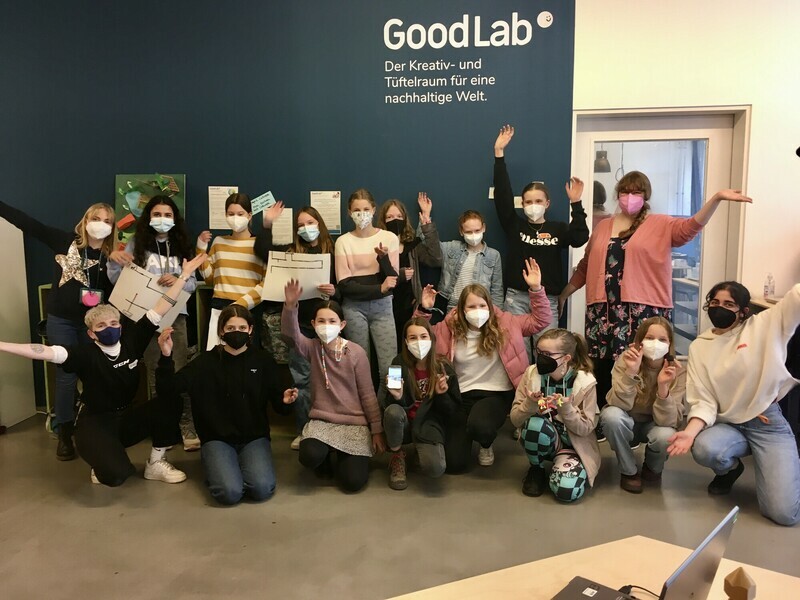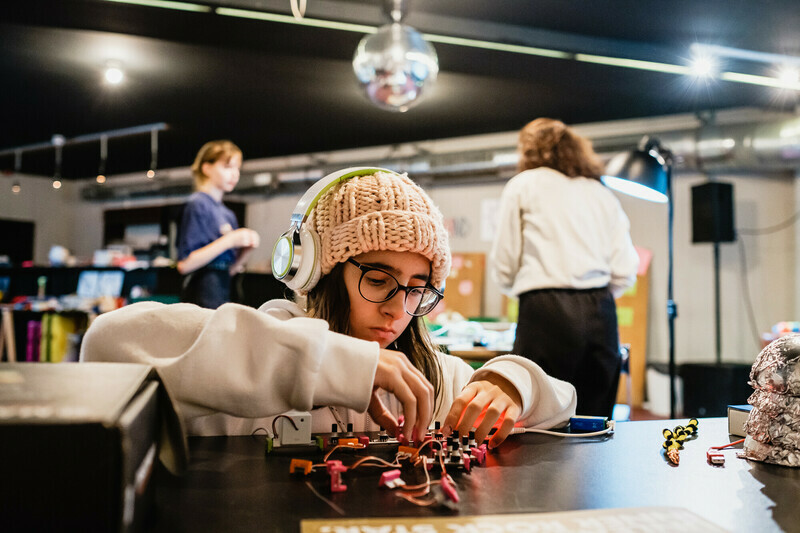Digitale Bildung für nachhaltige Entwicklung – Gemeinsam für ein besseres WIR
Wir alle brauchen Digitale Bildung für nachhaltige Entwicklung. Denn wir sind überzeugt: Ein sinnstiftender Zugang zu Technologie ist die Zukunft!
16.08.2022 #themenIn our workshops, we observe time and again how children are fascinated by plants that make music, by plasticine that glows because it can conduct electricity or by a talking poster. When they start to understand how these things are made, they quickly arrive at the point: "Maybe I can do that, too. I'll try that myself!"
Doing things yourself in order to develop and experience your own effectiveness is an essential part of maker education and, accordingly, at the heart of all our learning formats. Through project- and problem-based learning, maker education strengthens key future competencies such as communication, collaboration, creativity and critical thinking.

Learning by doing, which equally involves “head, heart and hand”, characterizes our way of working. We consciously draw on the insights of great reform pedagogues such as Pestalozzi, Montessori, Piaget and Papert: Self-experience is at the center of our work, and in the spirit of playful learning, we always choose a playful approach that appeals to our inner curiosity and enthusiasm through discovery and exploration. To this end, we design environments that make learning itself an experience.

Learners start tinkering and trying things on their own initiative. Often an idea doesn't work out the first time around. Then they try again, look at the solutions others found and get inspiration and suggestions. They keep tinkering, asking questions, wondering, coming up with their own ideas, exploring, experimenting, and then: the spark in their eyes, a cheer, a happy face. "I made this myself! I can do it myself!" - the confidence in one's own creative power has grown. And immediately the child walks through the room a bit taller.

That's why we feel most at home in maker spaces and FabLabs, in open learning spaces that offer easy access to tools, technologies, materials and know-how. Maker education can be practiced in these spaces. Here, children and young people can explore and create.
In our handbook “Makerspaces in der Schule: So geht Lernen heute” (German-language only) , which we developed in cooperation with Save the Children Deutschland and the TU Berlin, we state:
"Due to their openness, maker spaces offer the ideal environment for gradually gaining new specialist experience in dealing with technologies and materials, while at the same time acquiring important meta competencies. Tinkering, experimenting, playing, programming, exploring, building, and inventing help learners discover their own talents, which they can develop further, and they experience self-efficacy through the concrete implementation of their own ideas in projects. [...]
Especially learners who have difficulties following the sometimes quite theoretical and abstract school activities learn important specialized knowledge in maker spaces simply along the way. For example, it can be much easier to grasp the principle of variables if the learners build a robot that reacts according to the sensor value. Maker spaces thus represent an essential tool for promoting equal opportunities and counteracting the education gap."

You want to start a maker space yourself? You have any questions about maker education? Feel free to contact us: maybe we can start something together. 😉 Let's Make!
*As in the manual: We have explicitly chosen the widely used spelling maker space to make it easier for beginners to find further literature. Nevertheless, we are aware of the discussion in the German-speaking world regarding the use of the more process-oriented term "Making Space", which we definitely support. We also support the FabLab movement and share the same mindset of making and sharing.
Eure Spende unterstützt uns dabei, noch mehr Menschen zu befähigen, mit digitalen Werkzeugen die Welt aktiv und nachhaltig zu gestalten.